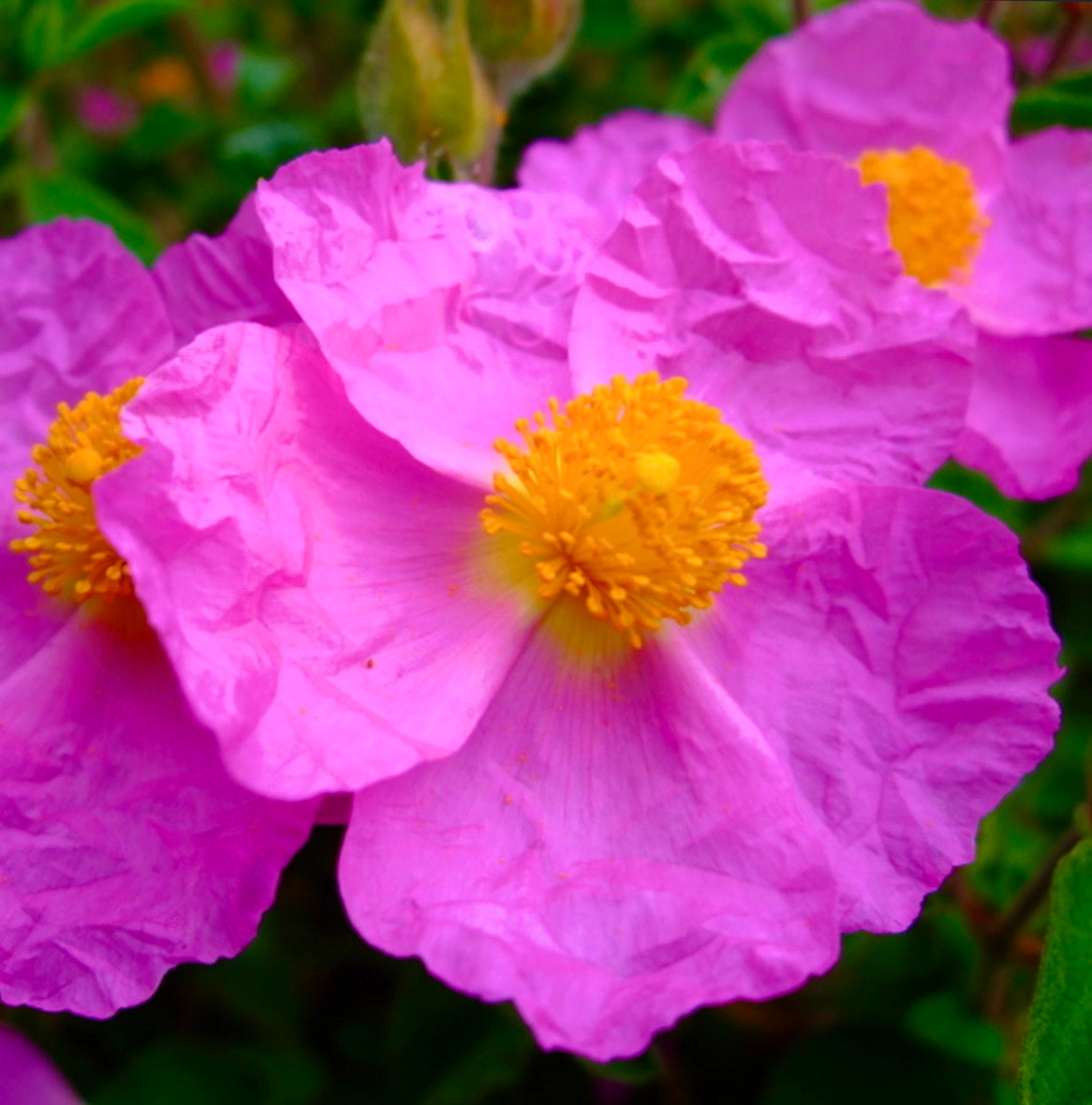- Catalogue Plants
Cistus albidus 40-70cm
Cistus albidus 40-70cm
Couldn't load pickup availability
Plant Description
Cistus albidus, commonly known as the white-leaved rock rose or gray-leaved cistus, is a small, evergreen shrub native to the Mediterranean region. It is known for its attractive gray-green foliage and showy, pink to white flowers.
-
Size: Cistus albidus is a compact, low-growing shrub that typically reaches a height of 2 to 3 feet (60 to 90 cm) and a similar spread. It has a mounding or spreading growth habit.
-
Leaves: The leaves of Cistus albidus are small, oval to lance-shaped, and covered in fine, grayish-white hairs. This gives the foliage a distinctive gray-green or silver appearance. The leaves are aromatic when crushed.
-
Flowers: The shrub produces abundant, five-petaled, saucer-shaped flowers in late spring to early summer. The flowers are typically pink to pale pink, though they can also be white. Each flower has a bright yellow center with a cluster of prominent yellow stamens.
-
Fruit: After flowering, Cistus albidus may produce small, woody capsules containing tiny seeds.
Cultivation:
-
Climate: Cistus albidus is well-suited for Mediterranean climates, but it can also thrive in other mild, temperate regions. It is tolerant of drought and prefers areas with dry summers and mild, wet winters.
-
Sunlight: Plant Cistus albidus in a location that receives full sun. It requires at least 6 to 8 hours of direct sunlight daily to bloom profusely and maintain its compact growth habit.
-
Soil: The shrub prefers well-draining, slightly alkaline to neutral soils. It can tolerate poor, rocky soils and is well-suited for gravelly or sandy conditions.
-
Watering: Once established, Cistus albidus is drought-tolerant and does not require frequent watering. Water sparingly during the growing season, and allow the soil to dry out between waterings. Avoid overwatering, as it can lead to root rot.
-
Mulching: Applying a layer of mulch around the base of the plant can help conserve soil moisture, regulate soil temperature, and control weeds.
-
Pruning: Prune Cistus albidus after flowering to maintain its shape and encourage new growth. You can also remove dead or leggy stems at this time.
-
Fertilizing: Generally, Cistus albidus does not require heavy fertilization. If the soil is poor, you can apply a balanced, slow-release fertilizer in the spring.
-
Pests and Diseases: This shrub is relatively resistant to pests and diseases. However, you should monitor for common issues like aphids and scale insects, as well as root rot in poorly drained soil.
-
Propagation: Cistus albidus can be propagated from semi-hardwood cuttings taken in late summer or early autumn. Allow the cuttings to root in well-draining soil or a suitable rooting medium.
Cistus albidus is a charming and easy-to-grow shrub that can be used in various garden settings. Its gray-green foliage and delicate pink to white flowers provide visual interest and make it a great choice for Mediterranean-style gardens, rock gardens, and dry, sunny landscapes. With minimal care, it can thrive and add beauty to your outdoor space.
PLANTS WILL BE SENT BARE ROOTS WITH NO SOIL AND POT
A phytosanitary certificate (for additional costs of €20,00) is necessary for export plants from Italy to ALL destinations out of EUROPEAN COMMUNITY.
Among which: United Kingdom Turkey, South America, USA, Canada, Australia, Japan, Singapore, Philippines, South Korea, Thailand, etc.
Disclaimer: Please keep on mind that the plant may have grown since pictured. Also be aware that most plants change across seasons. If present foliage could have been fallen or change in its color.
Botanical family: Cistaceae
Botanical genus: Cistus
Botanical species: Cistus albidus
SKU:BA-0698-S
Cultivation
Cultivation
Additional information
Additional information
Plant Height: 40-70cm
Plant Diameter:
Picture Taken on:
Pot Size:
Grafted/Not Grafted:


